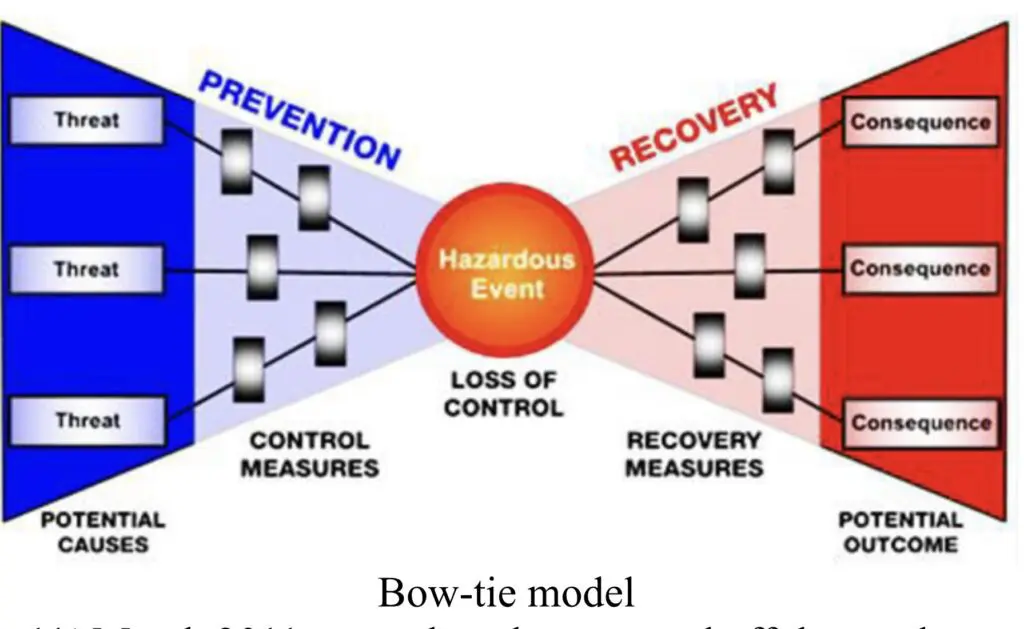The Weekly Reflektion 12/2023
The James Reason Swiss cheese model is often used to show barriers in place to prevent a major accident. The Swiss Cheese metaphor illustrates the holes that depict potential failure of or limitations to the barriers. Sometimes the cheese model is depicted as a bow tie showing a hazardous event and barriers to prevent this event on the left and barriers to reduce the consequences of the event on the right. However, in practice it may not always be clear whether a barrier is for prevention of the event or reduction of the consequences. This misunderstanding can have fatal consequences.

Do you assume that everyone understands what the protective measures in place actually do?
On 11th March 2011 an earthquake occurred off the north-eastern coast of Japan triggering a powerful tsunami with 13-to-14-meter waves. The Tohoku earthquake was measured at 9.1 on the Richter scale and remains the most powerful earthquake ever recorded in Japan. More than 15,500 people died as a result of the tsunami and homes, businesses, roads and railways were destroyed. The nuclear accident at the Fukushima Daiichi nuclear plant was also caused by the tsunami. The flooding caused the failure of emergency generators and loss of power to the circulation pumps for the main reactor. The resultant loss of cooling led to nuclear meltdowns, hydrogen explosions and the release of radioactive contamination. One person died directly because of the nuclear accident.
The area lies on in seismically active area and earthquakes are common. Tsunami protection walls had been built along the coast. Japan had developed sophisticated high-technologytsunami-warning systems that included satellite communications and hundreds of real-time monitoring stations. The Japanese Meteorological Agency (JMA) issued the first tsunami warning three minutes after the earthquake. Unfortunately, there were uncertainties in estimating the size of the tsunami and problems with getting information out to the public. The JMA firstly underestimated the earthquake magnitude as 7.9 and the tsunami height of three to six meters. After 28 minutes the tsunami height was re-estimated from GPS buoys to six to ten meters. 44 minutes following the earthquake the tide gauges scaled out (reached their maximum height) and the tsunami was estimated at more than 10 meters across the whole coastline. Unfortunately the earthquake had compromised power and communication systems so the updated information did not reach many areas and people failed to evacuate before the tsunami reached the coast.
In some towns the people did not evacuate at all as they believed the concrete tsunami protection walls built to withstand a ten-meter tsunami were adequate. Since the initial reports indicated a tsunami of three to six meters, they were confident that the tsunami would not affect them. One of the lessons from the 2011 tsunami was to communicate predictions regarding waves qualitatively and not provide numerical values of the estimated heights. There are inherent uncertainties in the tsunami wave height predictions and communication of wave heights in meters conveys an impression that the estimates are more accurate than they are. Another lesson was to convey the message that the tsunami protection walls are for consequence reduction and will not necessarily prevent deaths and damages. For major earthquakes the messages conveyed encourage controlled evacuation of potentially affected areas. A reminder of one of the most important principles in safety, ‘if no one is there, then no one can get hurt’.
